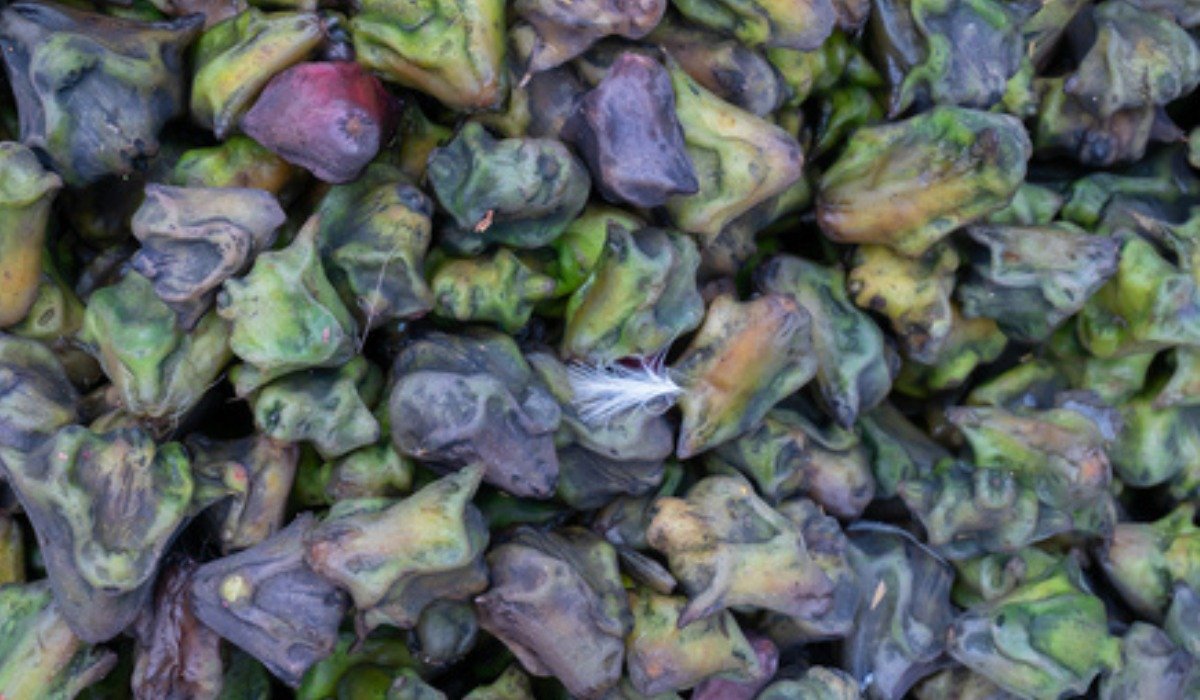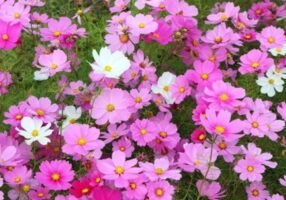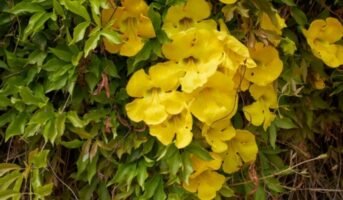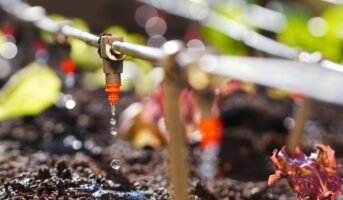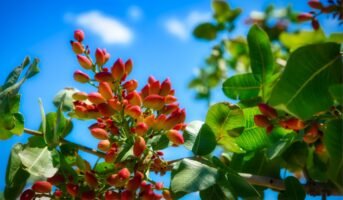The water chestnut plant, also known as the Trapa natans scientifically, is a rooted, deciduous floating plant that is found primarily in shallow to moderately deep water spaces. It is mainly found in the northeastern United States, Europe, Asia, and Africa.
It is most commonly found in houses surrounded by ponds, lakes, or even decorative water bodies that might complement the property. Not to mention, the fruit this plant bears is loved by many. It is quite abundant in huge properties with private ponds or lakes as it is quite dense, which helps in keeping the waters clean and protected to an extent, and has quite an appealing look that isn’t too flashy either.

Source: Pinterest
See also: Mango: What makes India’s national fruit so special?
Trapa: Key facts
| Botanical name | Trapa natans |
| Common name | Water chestnut plant, water caltrop |
| Family | Trapaceae |
| Foliage | Dense |
| Leaf type | Triangular with spiked borders. |
| Flowers | Occasionally occurring small four petaled flowers |
| Height | Ranges from 8 inches to 12 feet |
| Season | Blooms all year long |
| Fruit | Nut like fruit with barbed spines. Edible as well. |
see: all about Oval Leaf Pondweed
Trapa: How to grow the water chestnut plant

Source: pinterest
The water caltrop plant itself is self-pollinating, which means that the flowers can pollinate themselves. During autumn, the leaves turn red and die eventually. For growing these plants in your own pond, it should be moderately muddy. Not to forget, these plants like their water slightly acidic, with a depth of about 60 cm.
As for sowing these plants, it is an effortless process. Sow in spring, placing one seed in a single pot and submerging them under a few centimetres of water. Just place the seeds at the desired spot at the bottom of the pond, and you’re good to go.
As for smaller ponds, as low as 2-3 seeds are enough to achieve a beautiful plantation look that complements all sorts of house ponds. Also, group planting with this plant is extremely easy, and it goes well with other plants like the Yellow Pond Lily, the European pondweed, and the heartleaf pokeweed.
Although you might want to know, try not to plant these in a fishpond. The acid secreted by these might make for an unlivable environment.

Source: Pinterest
See also about: tree of pista
Trapa: Maintenance
When planted in a suitable location, the Trapa natans flourishes smoothly, and it looks spectacular while doing so. Albeit, for smaller ponds and aquariums, it is advised you cut off some to all of the leaves in autumn as soon as the plant dies. This primarily depends on the size of the pond or the aquarium. The main reason for this is to prevent pollution of decaying plant biomass. In larger water bodies, it is not that big of an issue.

Source: Pinterest
Trapa: Harvesting
The fruit of the Trapa natans can be easily harvested upon the plant’s death. To harvest the fruits, Simply detach them from the shoot and collect them.
The fruit kernels of the water caltrop can be harvested and consumed. Although, it is strongly discouraged to consume them raw because of all the parasites and toxins. Nonetheless, cooked water caltrops are delicious and are largely consumed in many parts of Asia.
Trapa: Uses and benefits
Although it is not that popular of a plant in Western countries, it is of great significance to the Indian Ayurvedic system of medicines which is used to diagnose and solve problems regarding the stomach, digestive system, liver, kidney, and spleen.
The whole plant is used in the treatment of gonorrhoea, menorrhagia, and other such genital infections. It is also used in the treatment of ulcers, wounds, dysentery, and other such cases where inflammation occurs. It is due to the high content of minerals and ions like calcium, potassium, sodium, and zinc. The juice of its stem is also used to treat disorders of the eye.
It has dense and wide spiked leaves that allow little to no light to pass through them, making it incredibly difficult for infectious organisms to survive under them. Although this might be a problem in places with thriving aquatic ecosystems, using it in non-biologically dependent water bodies that are strictly for cosmetic or harvesting purposes is completely fine.
The fruit it bears, also known as water chestnut, is quite a delicacy when harvested at the right time. If not, it can serve no purpose other than to actually pose a danger to visitors with its sharp spikes that can impale even shoes.
Trapa: Toxicity and threats
These plants are very susceptible to an infectious parasite called fasciolopsiasis. Even eating them at the wrong time can be extremely dangerous as these fruits, when not ripe (and even boiled), are incredibly toxic and consist of high amounts of toxic metal compounds.
FAQs
Do the other variations of the Trapa natans bear edible fruit as well?
The different species belonging to the Trapa natans family, primarily Trapa rossica and Trapa bicornis, also bear edible fruits.
How do you eat the water caltrop fruit?
Boil the fruit and take the peel off before consuming it.
What does the water caltrop fruit taste like?
The taste falls between that of almond and pistachio, slightly alkaline.
What is the difference between the members of the trapa family?
The fruits they bear taste and look slightly different from each other.
Housing News Desk is the news desk of leading online real estate portal, Housing.com. Housing News Desk focuses on a variety of topics such as real estate laws, taxes, current news, property trends, home loans, rentals, décor, green homes, home improvement, etc. The main objective of the news desk, is to cover the real estate sector from the perspective of providing information that is useful to the end-user.
Facebook: https://www.facebook.com/housing.com/
Twitter: https://twitter.com/Housing
Email: [email protected]
